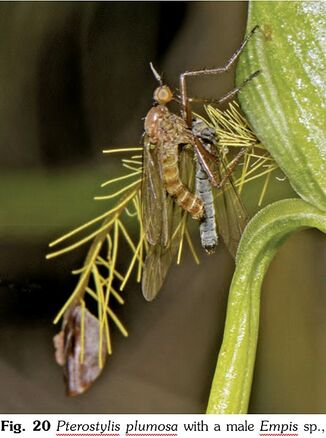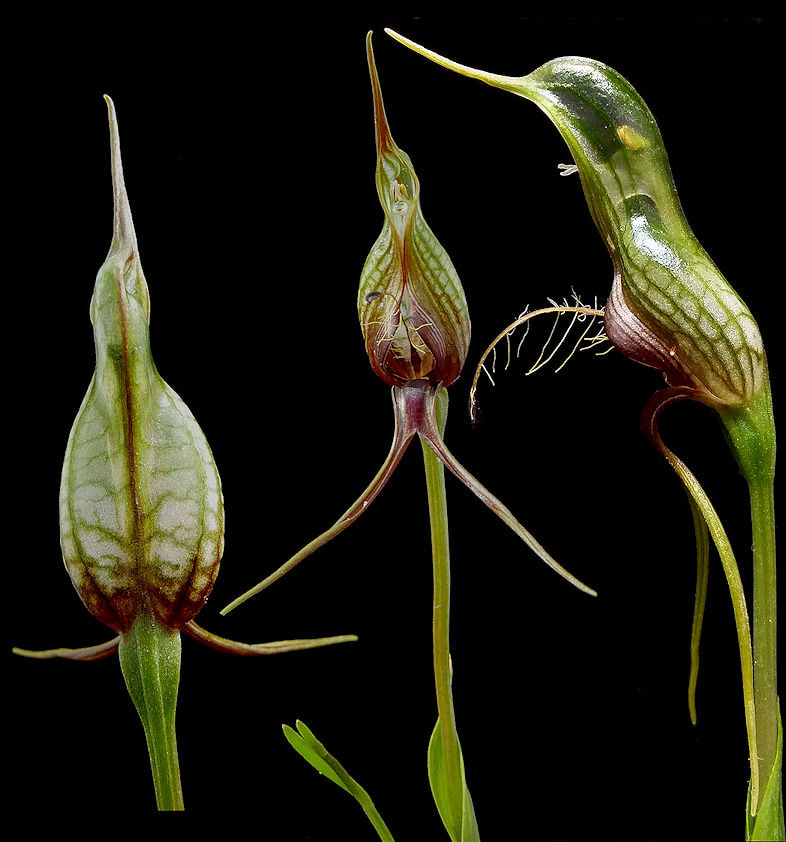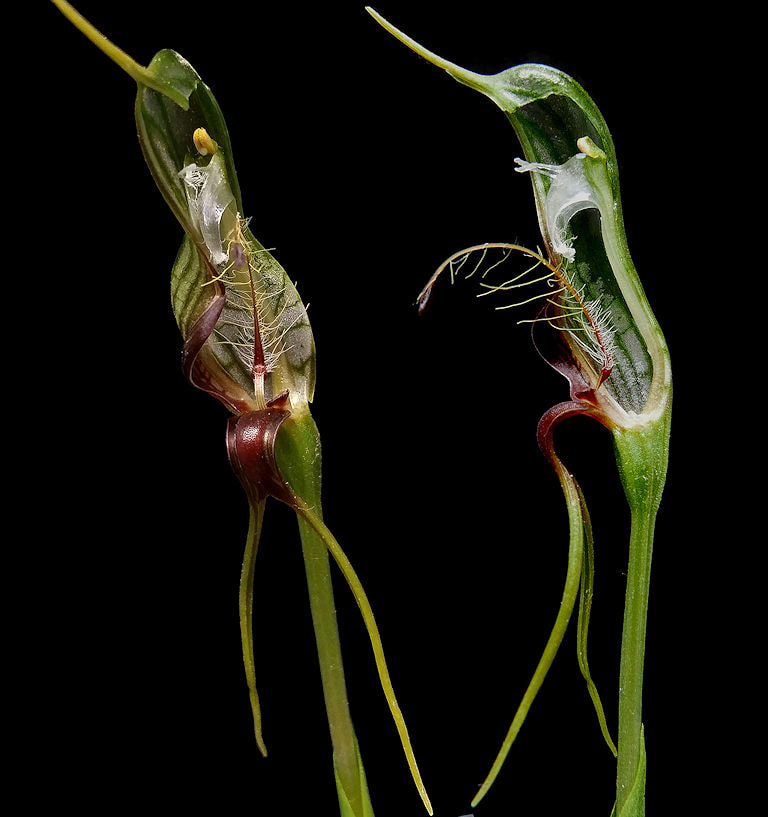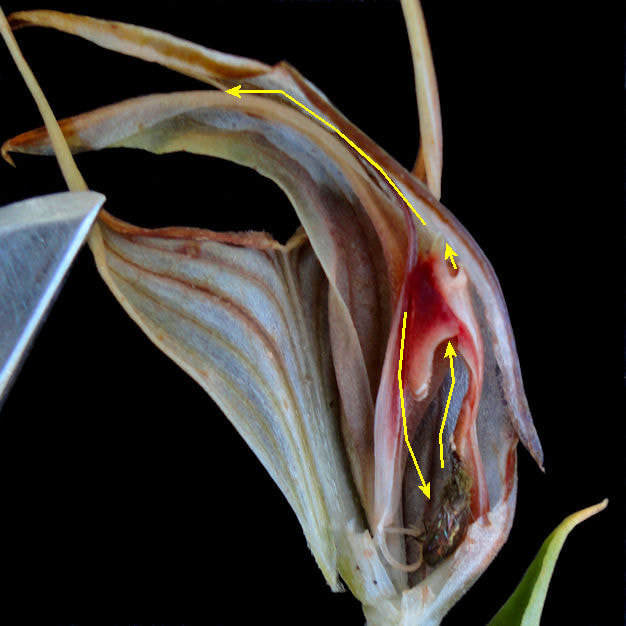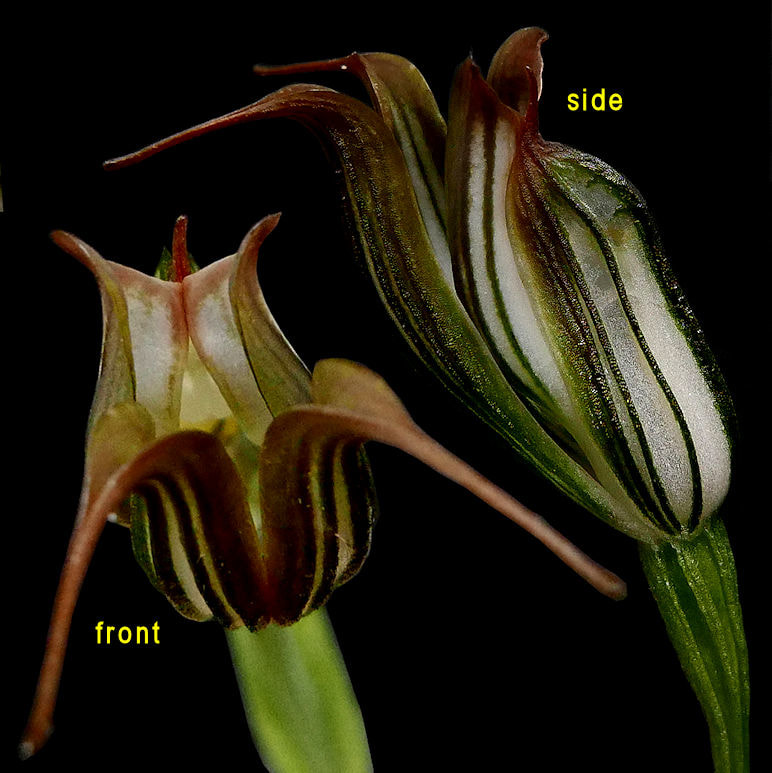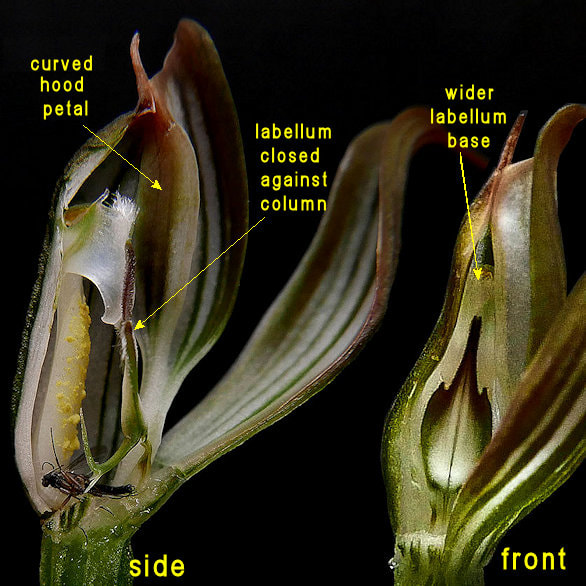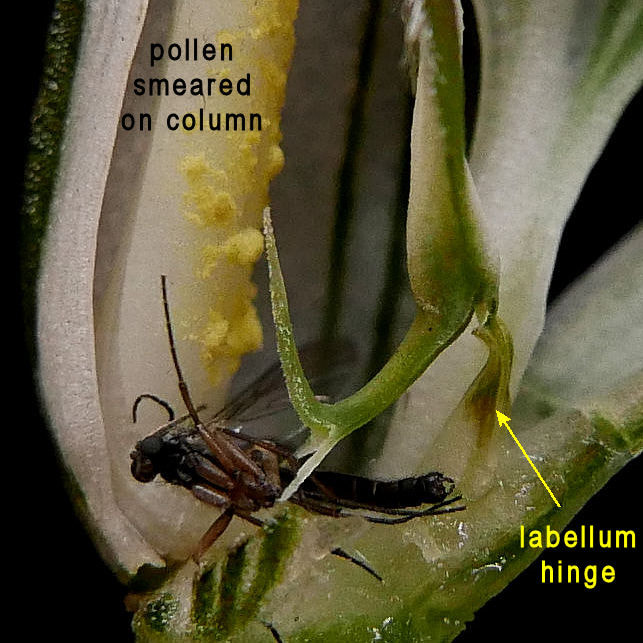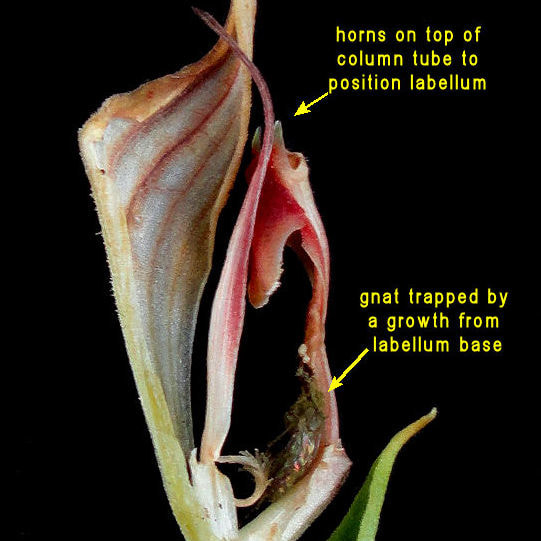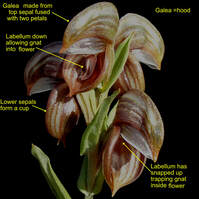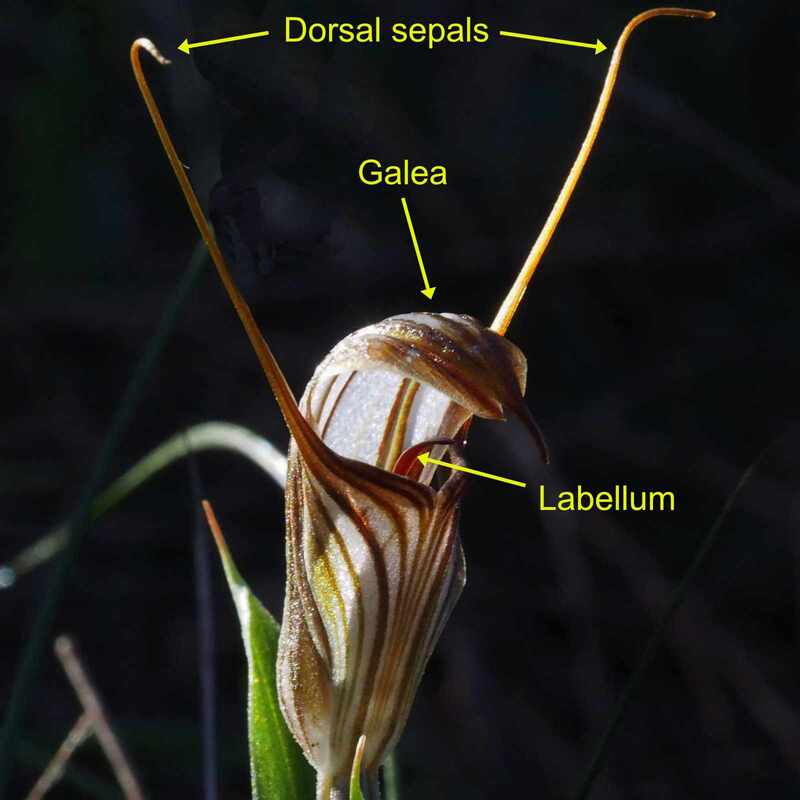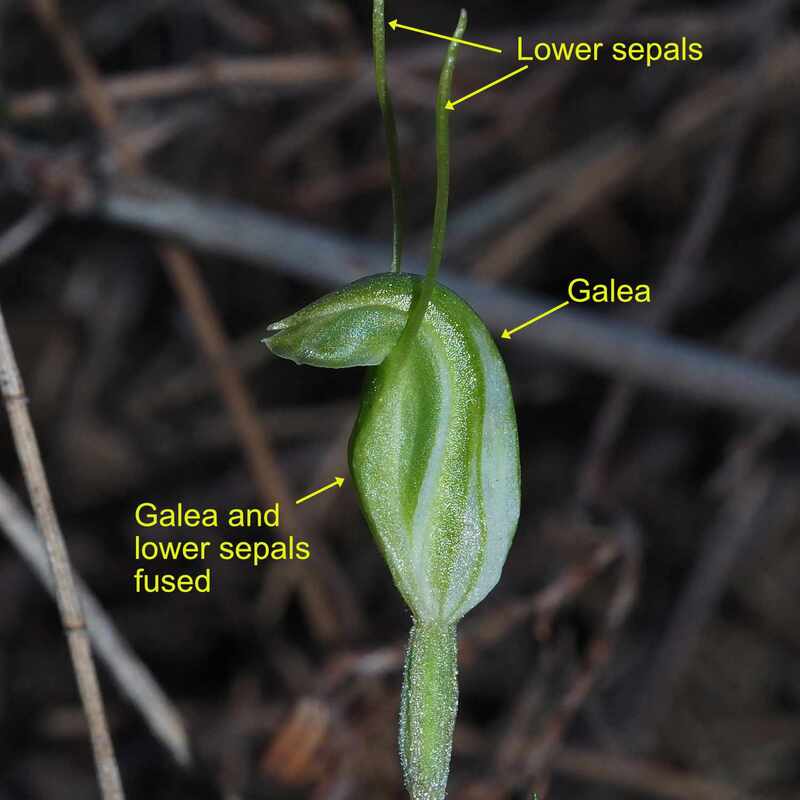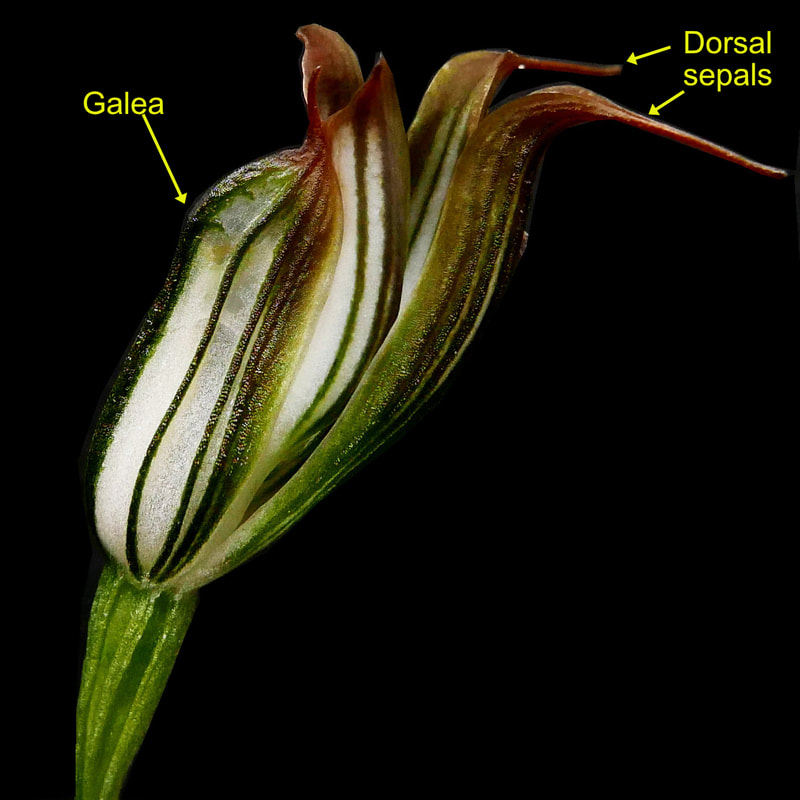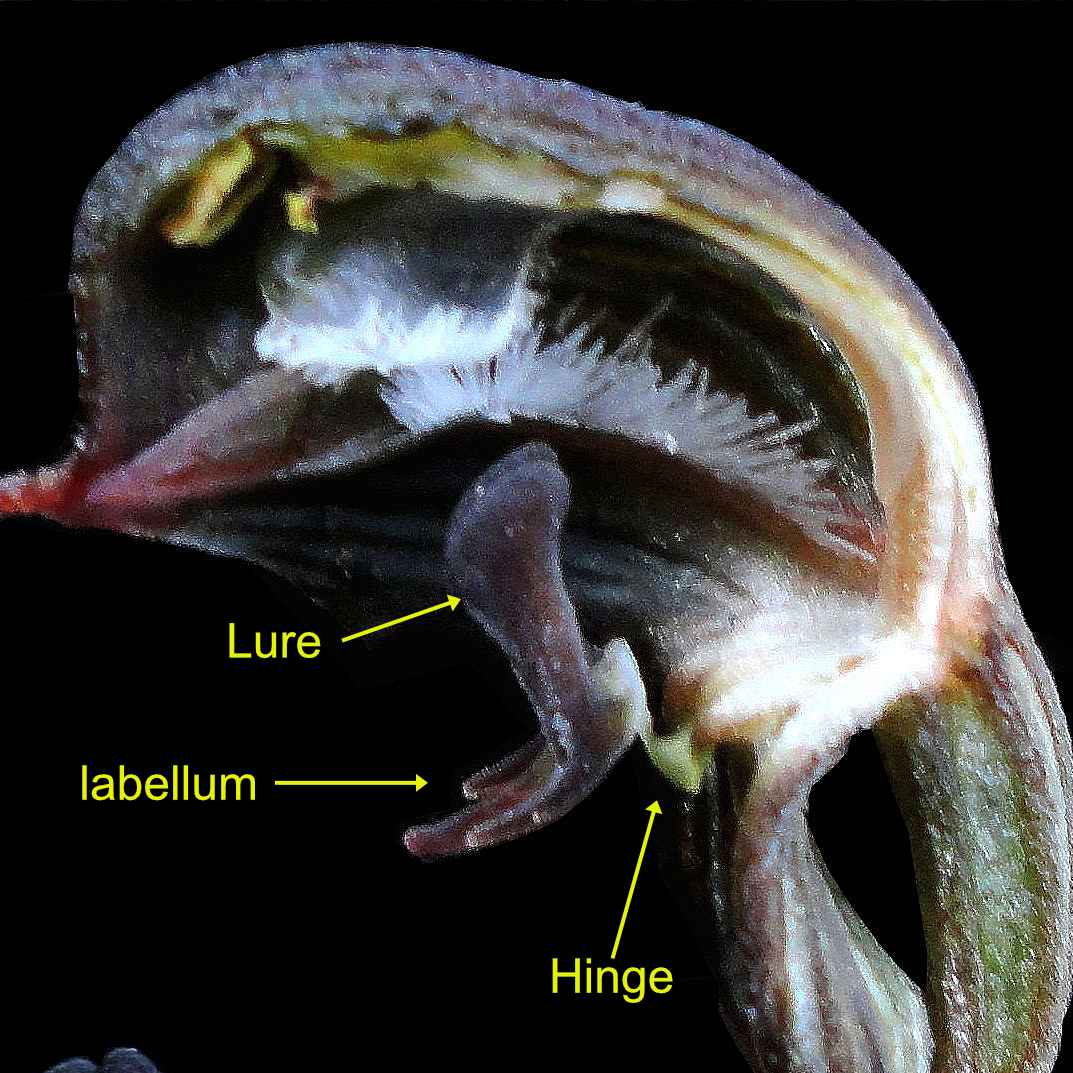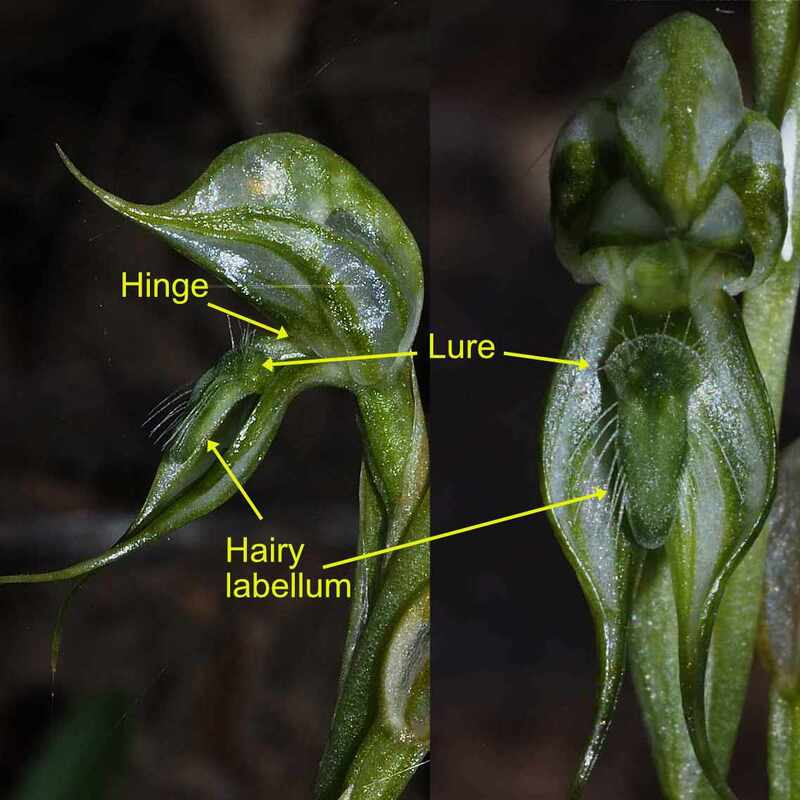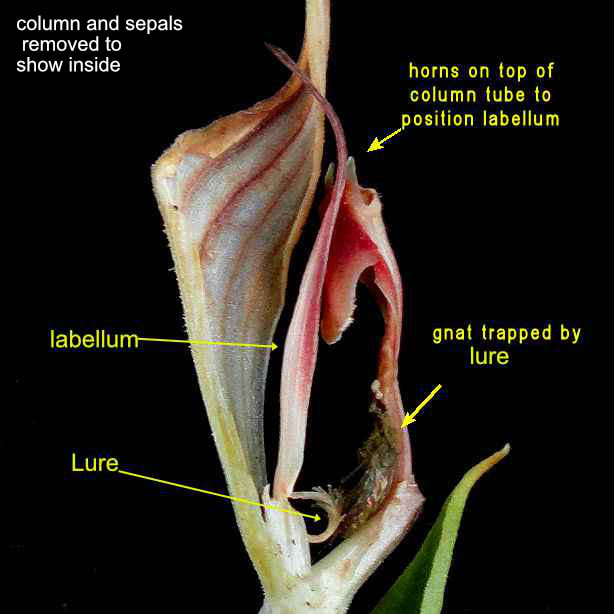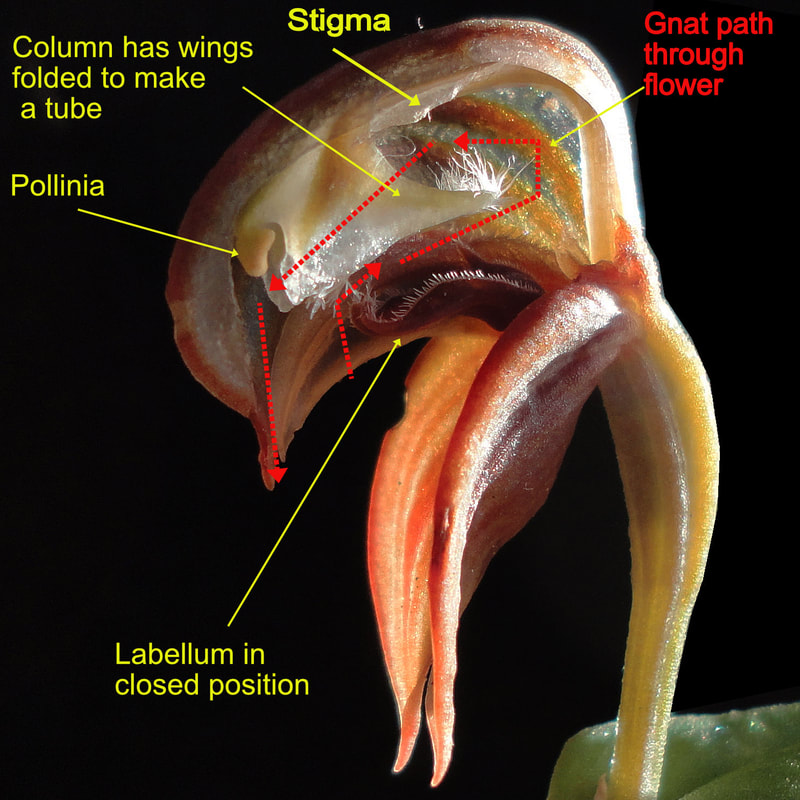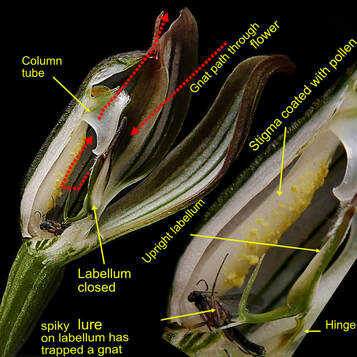| I was excited to find a bird orchid at Newman Block south-east of Highbury, because I hadn’t seen one for 65 years. My interest in wildflowers began then when my mother and I used to look for orchids in remnant bush at Karrakatta Cemetery. Alas now all graves. This orchid has always fired my imagination with its elegant shape, translucence and the strange wispy labellum that gives the species name. Barbata means beard. with wispy labellums and elegant shapes, plumed greenhood orchids are the most evolved of the Greenhood orchids. In this case the galea (hood) is folded inwards to form the entry and exit spots for gnats with essentially the same column tube and anther location. Unlike most greenhoods, the bird orchid is pollinated by a tiny predatory fly dagger fly Emis species). Male flies present a gift to females (dinner date?). The image taken from this reference, shows a male presenting to an orchid. |
The leaves have a wonderful reticulated and variegated green, which resembles a tropical plant. Delightful!
